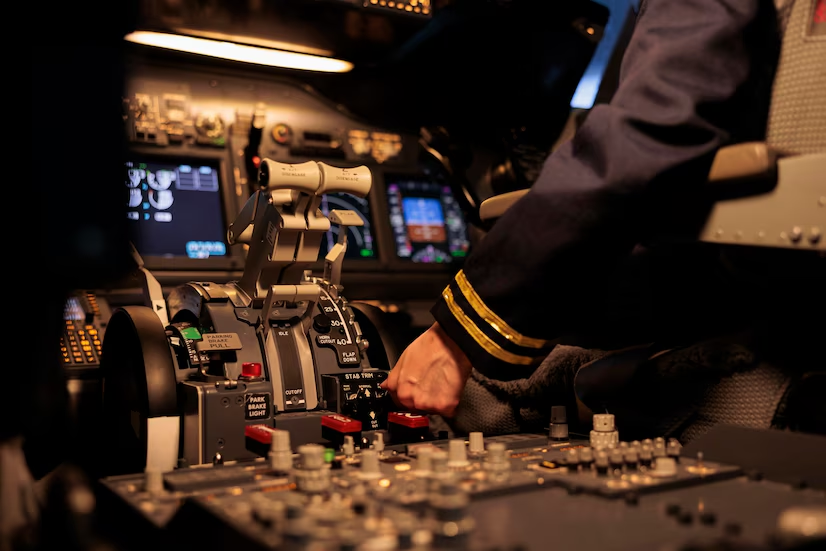A vital part of maintaining flight performance and safety is aircraft instrumentation. Devices like altimeters, airspeed, and vertical speed indicators must be accurate for pilots to make educated decisions. An Aircraft undergoes routine maintenance and calibration to maintain this precision, which is sometimes done with the aid of specialist tools known as air data test kits.
Table of Contents
1. Understanding Air Data Test Kits
An Air data test set (ADTS), often called a pitot-static set, is are vital instrument for testing and calibrating aviation sensors. By simulating various flight parameters, including temperature, altitude, and airspeed, these portable gadgets give technicians a controlled environment to check aircraft equipment’s accuracy.
Technicians ensure the proper functioning of instruments and provide precise data during flight operations by cross-referencing instrument readings with the simulated conditions generated by the ADTS. This procedure enables them to detect any discrepancies or errors. ADTS, which provide extensive testing and calibration procedures, are essential to preserving the safety and dependability of aircraft systems.
2. Importance of Accuracy
Safe flight operations must ensure the accuracy of the aircraft instruments. Inaccuracies in navigation, altitude awareness, and airspeed control can result from even little variations in instrument readings, which could jeopardize flight safety. Frequent calibration with air data test kits reduces the possibility of errors and preserves the integrity of the instruments, protecting both crew and passenger safety and improving overall flight reliability.
Accurate instrumentation is also necessary to ensure operating efficiency and comply with aviation laws. Flight schedule interruptions, fuel inefficiencies, and departures from designated flight trajectories can all be caused by inaccurate readings. Airlines can maintain the highest standards of safety, compliance, and performance in their flight operations by putting accuracy first through routine calibration using air data test kits.
3. Calibration Procedures
Instrument calibration on aircraft usually entails a number of systematic steps carried out by skilled experts. Known inputs, such as pressure, temperature, and airflow, are applied to the devices using air data test kits, which then monitor the related outputs. Any variations from expected values are thoroughly examined and adjusted as needed to guarantee reliable measurements. In order to accurately recreate diverse flight conditions, the calibration process may involve evaluating multiple parameters both separately and in combination.
Furthermore, specialists adhere to industry norms and manufacturer instructions to guarantee accuracy and consistency in the calibration procedure. To monitor the operation of aircraft instrumentation over time, comprehensive records are kept, and routine calibration tests are carried out at predetermined intervals. By adhering to rigorous calibration procedures, airlines can maintain the accuracy and reliability of their aircraft instruments, thereby enhancing flight safety and operational efficiency.
4. Versatility and Portability
Because of their portability and versatility, air data test kits can be utilized in hangars, maintenance facilities, and even on the runway. These small devices usually come with a variety of sensors, probes, and interface options to support various aircraft types and instrumentation systems. Because of their portability, professionals may conduct testing and calibration procedures at several sites, reducing downtime and streamlining maintenance operations.
Air data test kits are an essential tool for aircraft maintenance crews because of their adaptability, which guarantees compatibility with a broad range of aircraft models and instrumentation combinations. The mobility and adaptability of air data test kits enhance the efficacy and efficiency of aviation maintenance procedures, whether carrying out standard inspections or debugging particular problems.
5. Compliance with Regulatory Standards
Accurate aviation instrumentation maintenance is required by law and crucial for safety. In order to maintain compliance with safety procedures and regulations, regulatory organizations such as the Federal Aviation Administration (FAA) and the European Aviation Safety Agency (EASA) mandate the regular testing and calibration of aircraft equipment. These regulatory authorities set strict guidelines for the calibration process, including testing frequency, required documentation, and procedures to be followed.
Achieving and preserving airworthiness certifications for aircraft depends on compliance with these requirements. Airlines uphold the highest levels of aviation safety by demonstrating their commitment to guaranteeing the safety and reliability of their aircraft through frequent calibration using air data test kits and regulatory compliance.
Conclusion
In order to ensure the safety and effectiveness of air travel, air data test kits are essential tools for maintaining the precision and dependability of aircraft instrumentation. Aviation experts may identify and fix any disparities or inaccuracies in instruments by routinely calibrating and testing them with these kits. The application of (ADTS) helps to improve the aviation industry’s overall safety standards and operational performance.





